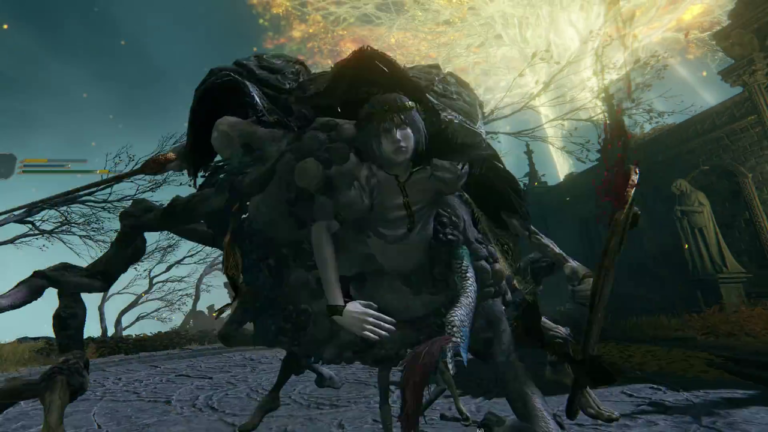Why Sam Barlow Thinks Video Game Stories Should Take More Cues From Diablo’s Loot System
Sam Barlow, head of Half Mermaid studio and one of the creative minds behind 2022’s critically-acclaimed Immortality, is working on not one, but two secret projects. Both of them look weird, and creepy as heck. What are they? He’s not saying. But they both have something to do with “kaleidoscopic freedom.”
Earlier this year, Half Mermaid quietly dropped two new store pages on Steam for two different games: Project C and Project D. Both projects have cryptic descriptions and imagery that suggests Barlow is returning to the horror genre, but few other details. Barlow confirms to me that C and D are two separate projects made by two separate teams within Half Mermaid, and that one of them is being made in Unreal Engine. But for now isn’t saying much more than that.
So we talk around the projects instead, discussing ideas and philosophies he and Half Mermaid have been playing with. One of these ideas is what Barlow calls “kaleidoscopic freedom.” In a previous conversation with me, he described Immortality as a narrative metroidvania – it has “exploration, backtracking, re-traversing, unlocking some ability to navigate, or just to understand.” Just as someone might unlock a double jump in a metroidvania and return to a previously-visited room to try it out, so too does Barlow want players to revisit scenes, ideas, or places in his games with renewed understanding of what’s going on in them and draw new conclusions about the story.
In earlier iterations, like in Her Story, the player had full control over this process. But Barlow has been experimenting more and more with the idea of asking players to cede control a bit, and what that can mean for a story. If it works for something like Diablo – which has randomized loot – why couldn’t it work for narrative?
“You see the thing where people are like, ‘I made the moral choice here, I should be rewarded for it.’ We want this very predictable, but that’s a very boring way to experience the story. If you do the thing and you get the thing you expected, it’s almost the opposite of what I expect out of a good story. So the fact that the world generally at large loved Immortality and took to it, and embraced that aspect of this kind of kaleidoscopic freedom, the next game’s just like, okay, how do we… just really, I feel like that, regardless of genre or control style, that’s the thing I’m really married to now.”
Another element Barlow wants to experiment with is the idea of simply dropping a player directly into the action with minimal explanation or tutorial. “I was playing a game with my kids recently,” he says. “We just got a PS5 in the house, so I was working through a bunch of games that I need to play for a jury online. It was a lot of big name AAA games. And one of the games we sat down, 50 minutes in, we were still doing this tutorial, still walking and talking and doing these other things. And my kid was like, ‘Just let me play the game.’ And I feel like a grumpy old man, the older I get, the more I’m like, ‘Just put me in the game. Let me figure shit out. I’m not an idiot.’”
Barlow illustrates this with the Zelda series: Skyward Sword, he says, had very “didactic tutorials,” but then Breath of the Wild asks players almost instantly to “go figure it out.” “That’s, to me, what as a player is really exciting about something like Immortality, where it is daunting, but slowly finding my way through this thing and giving it form. It also means that when different players play, they get very different experiences that are personal to them. I think that should almost be like the baseline for a video game. If it’s an interactive thing, it should really matter who’s playing it, right?”
One final tenant Barlow has in mind on Project C and D is simplicity. He’s not a fan of games that are stuffed with tons of gameplay systems just for the sake of having them. Rather, he wants to use “subtractive design,” trying to find the simplest possible thing that gives the most enjoyment. No open world bloat, no endless array of collectibles and side quests. But Barlow is insistent that simple, or even short, does not mean low-quality, nor low value, nor does it mean that a game is or should be cheap to make.
“What I understand about The Last of Us dev process, it’s not the graphics that cost $220 million. It’s the fact that they are allowed to iterate and throw away levels seven to eight times,” Barlow says. “I spoke to someone that worked on one level on Uncharted. And we were like, ‘Oh, how long did you spend to make this level?’ In my head, I’ve made levels in a couple of months on other games. And they were like, ‘Two years. We had two years, as a team, with an embedded coder, animator, all these people. We had two years to try things, discover things, have the code, to come up with a cool idea, figure out if there’s a way of incorporating it. Doesn’t work, throw it out, try again.’ And I don’t want to critique that. Because obviously, it lets them get to a place where they’re coming up with loads of cool shit.
“There’s probably a more efficient version, if they had to be efficient, where you actually commit to some decisions early on, and are more specific about what this game is going to be. But Last of Us did not cost $220 million because they said the hair has to look great. It cost that because they spent all this time on it, and because they allowed themselves to keep throwing stuff out, to try and make the most perfect, most epic single player game. And things like the hair looking great falls out of that, because there’s artists spending years tweaking and stuff.”
That probably shouldn’t be taken to mean that Project C or D will cost $220 million or anything. But Barlow does say Half Mermaid was “lucky” when it came to getting Projects C and D pitched, funded, and locked in. “You had all the devs who were making bigger games, whose stuff got massively screwed up by COVID and delayed, and then all their games came out last year. And I know that, now, it’s really, really hard apparently to sign things, and now is a really hard time to get funding. I think we got in just before that, or we’re just weird and the stuff we make is safe.”
But he also tells me that his success and relative stability can still feel precarious. Even with the critical acclaim for Immortality and acknowledgement that his name has some industry clout, Barlow worries it could all collapse any second. “It’s like we’re in a big ocean and it’s choppy, choppy waves. And there’s these giant carriers, the Titanic is sinking, and there’s Fortnite coming past us, and some of these things are capsizing, and people are falling off the decks. And we’re in our little indie boat, managing to dodge everyone and skirt around it.
“I think the scary thing is how dependent indie games can be now on platforms,” he continues. “When you start realizing that like, ‘Oh, I’m banking on getting a deal,’ whether it’s a Netflix or a PlayStation or a Game Pass. That’s almost become an important part of getting to sustainability of your indie game. If these handful of companies turn around and decide not to do this anymore or change their minds, then suddenly, we’re screwed.”
Despite the industry’s precarity and Barlow’s stated fears, Barlow and Half Mermaid are choosing to continue their unique pedigree of, as Barlow puts it, “those weird experimental cinematic games.” Fundamentally, Barlow wants his work both past and present to constantly challenge the very definition of what a video game is. Whatever they’re doing, whatever Project C and Project D turn out to be, Barlow is committed to always asking the same question: “how far can we push that definition?”
Rebekah Valentine is a senior reporter for IGN. Got a story tip? Send it to [email protected].
Check out our Latest News and Follow us at Facebook
Original Source







